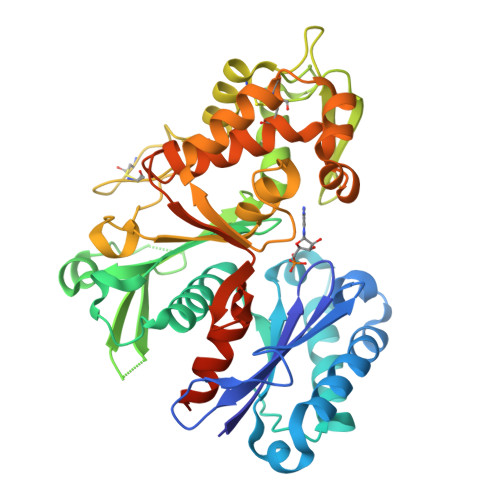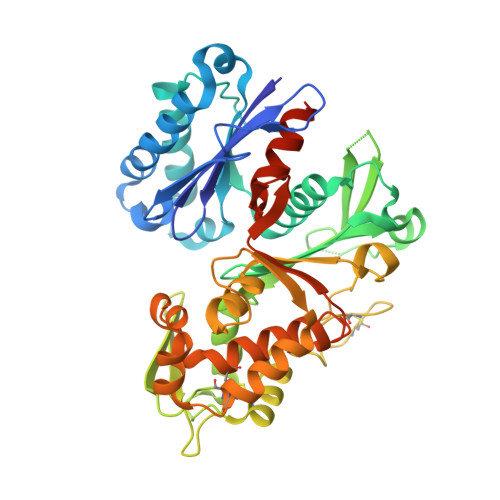Structures and kinetics for plant nucleoside triphosphate diphosphohydrolases support a domain motion catalytic mechanism.
Summers, E.L., Cumming, M.H., Oulavallickal, T., Roberts, N.J., Arcus, V.L.(2017) Protein Sci 26: 1627-1638
- PubMed: 28543850
- DOI: https://doi.org/10.1002/pro.3199
- Primary Citation of Related Structures:
5U7P, 5U7V, 5U7W, 5U7X - PubMed Abstract:
Extracellular nucleoside triphosphate diphosphohydrolases (NTPDases) are enzymes that hydrolyze extracellular nucleotides to the respective monophosphate nucleotides. In the past 20 years, NTPDases belonging to mammalian, parasitic and prokaryotic domains of life have been discovered, cloned and characterized. We reveal the first structures of NTPDases from the legume plant species Trifolium repens (7WC) and Vigna unguiculata subsp. cylindrica (DbLNP). Four crystal structures of 7WC and DbLNP were determined at resolutions between 1.9 and 2.6 Å. For 7WC, structures were determined for an -apo form (1.89 Å) and with the product AMP (2.15 Å) and adenine and phosphate (1.76 Å) bound. For DbLNP, a structure was solved with phosphate and manganese bound (2.60 Å). Thorough kinetic data and analysis is presented. The structure of 7WC and DbLNP reveals that these NTPDases can adopt two conformations depending on the molecule and co-factor bound in the active site. A central hinge region creates a "butterfly-like" motion of the domains that reduces the width of the inter-domain active site cleft upon molecule binding. This phenomenon has been previously described in Rattus norvegicus and Legionella pneumophila NTPDaseI and Toxoplasma gondii NTPDaseIII suggesting a common catalytic mechanism across the domains of life.
Organizational Affiliation:
School of Science, University of Waikato, Private Bag 3105, Hamilton, 3240, New Zealand.

















